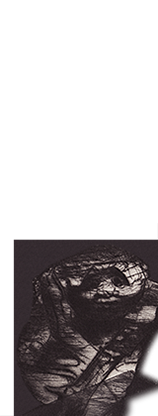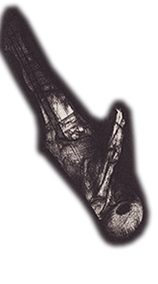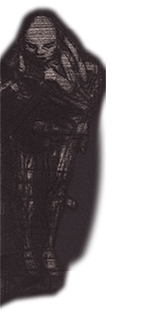Dado – Audio documents
Conversations
Discussions with Marcel Billot and German Viatte on November 6 and December 5, 1969, at Hérouval (in French)
Sound archives
Pompidou Center, MNAM / CCI, Bibliothèque Kandinsky, Paris
These talks were partially transcribed in the catalog published in Paris in 1970 by the Centre National d’Art Contemporain, on the occasion of the Dado exhibition from January 20 to February 23, 1970.
November 6, 1969, 1st part
During a wide-ranging, Dado successively evokes memories of his childhood and of the Second World War in Montenegro (his “earliest visions of horror”), the panorama of Lake Scutari, his friendship with Réquichot, his hospitalization in 1961, his relationship with food, Blaiberg’s heart transplant in 1968, everyday horrors, death and the forms generated by death, life as a type of damnation, death in nature, the pond at Hérouval.
November 6, 1969, 2nd part
Dado begins by referring to a picture by Jean Fouquet, Virgin and Child with Seraphs and Cherubim in the Royal Museum of Fine Arts in Antwerp.
Here the recording has been cut. In the CNAC catalog it continues (in all probability taken from complete version of the recording):
« GV : Les anges rouges ?
D : Je pensais aux problèmes raciaux qui nous concernent personnellement, il est curieux que Fouquet ait peint des anges noirs et blancs. Les anges bleus, se sont des bébés noirs, les anges rouges ce sont des bébés blancs. Mais c’est évident…, c’est incroyable…
GV : Ce qui est très étonnant, ce sont ces têtes portées par des ailes, l’absence de corps.
D : Oui, c’est cela, c’est une idée mystique, l’absence du tronc, certainement. »
(GV: Red angels?
D: I was thinking about the racial problems that concern us personally, it’s curious that Fouquet painted black and white angels. The blue angels, those are black babies, the red angels those are white babies. But it’s obvious…, it’s incredible…
GV: What is truly astonishing is these heads borne on wings, the absence of any body.
D: Yes, that’s it, it’s a mystical idea, the absence of any torso, certainly.)
The recording resumes and Dado tells how he once saw the corpse of a man who had thrown himself under a train. Then he talks about the picture by Andrea Mantegna, The Dead Christ and Three Mourners, the influence of Italian and German painting on his work and especially that of Witz, about his training in the Art School, about Bosch, Brueghel, Schöngauer, a picture of a soldier by El Greco in the Frick Collection, New York (Dado’s memory played tricks on him at the time of this conversation, but in fact he is thinking of a portrait of Vincenzo Anastagi)… Then he mentions the city of New York, his meeting Hessie, Gérard de Nerval’s La Main enchantée, drawing as an exercise, rubbing out as a technique in his pictures, the brain…
Hessie enters the room and the recording cuts off, beginning again with Dado describing his working day. He then remarks on the vast number of cats at Hérouval, the importance of animals and especially of birds, night, a “psychoanalytical” interpretation of the obsessive motif of the house in his pictures, the importance of words, and the war – not seen but heard, – his cousins killed in the resistance.
December 5, 1969, 1st part
Dado talks about the grant he received from Socialist Yugoslavia when just 14, his training at the art school, his first portraits of Soviet marshals in 1943, his fellow art students, his tutors, his uncle who was a painter, Nolde, the nicknames he gave to his schoolmates, the first picture he sold (End of the World). Other subjects include working as a house-painter after he arrived in Paris; working in the Patris lithography workshop; his meeting with Dubuffet there, as well as with James Speyer, and then with Kalinowski and Daniel Cordier, who was to represent him; his arrival in 1958 at Courcelles-les-Gisors at Father Lévêque’s the model for Thomas More; why he then painted babies, about the Virgin with Child Surrounded by the Holy Innocents (“the most beautiful of Rubens’ pictures”), his first visit to the Louvre; why he has settled in the countryside, the city and the countryside; the walls of the Vexin; his first “mechanical” pieces; absence of water and fire in his painting; petrifaction, snow in pompier painting.
December 5, 1969, 2nd part
Viatte and Billot’s questions lead Dado to deal with the following themes in succession: the “discreet” absence of blood in his painting; the death of his mother; the buckets of blood in the ex-libris at Hérouval; ambiguity as eternity; the distinction between things he looks at and the things he paints (trees); his forgetting what he paints; the male sex; the Baboon in Love; discourse and painting; political disasters as a confirmation of his painting as the painting of the curse of “the worst is to come”; the idiocy of happiness; the interest of the angst-ridden people in his painting; the absence of a personal aspect to the timeless horror of his painting; racism; Eldridge Cleaver; the absence of illusion but the lack of interest in despair (a “reactionary sentiment”); the fact that his painting should not be personal exorcism but shared experience; his rejection of civilization.
Unpublished conversation about Bernard Réquichot with Alfred Pacquement in 1972 at Hérouval (in French)
Sound archives
Pompidou Center, MNAM / CCI, Bibliothèque Kandinsky, Paris
Dado tells Alfred Pacquement about meeting, befriending and talking to Bernard Réquichot. A large number of anecdotes evoke Réquichot’s personality, work, writings, reading matter (Joyce and Michaux), his vision of the world, his loneliness, and his suicide. Dado also talks again about his picture in tribute to Réquichot, The Large Farm (1962-1963), and about his Front-wheel Drive (1968-1975). He also mentions moving to Hérouval in 1960 and his stint in hospital in 1961.
→ See also the video of the discussion with Alexandra Deneux, also on Réquichot. (In French)
→ Visit the official website devoted to the work of Bernard Réquichot. (In French)


